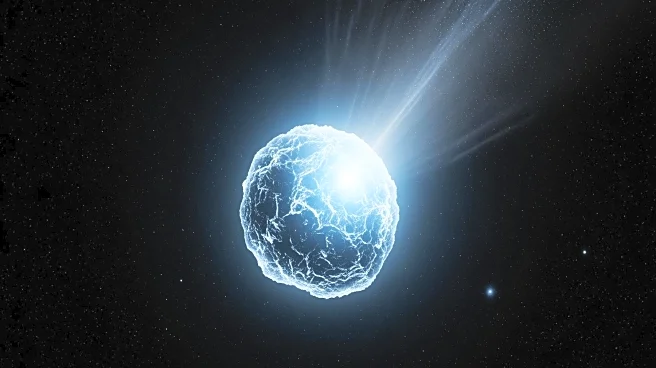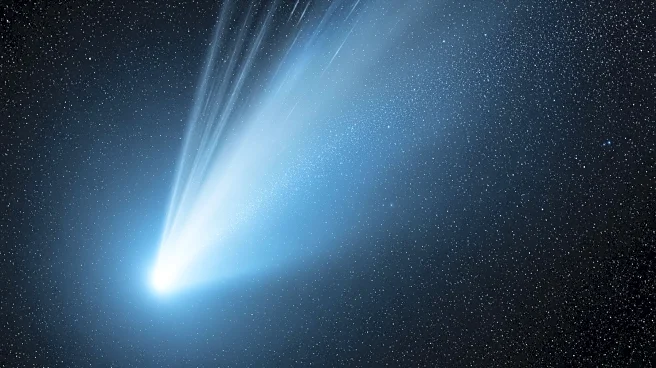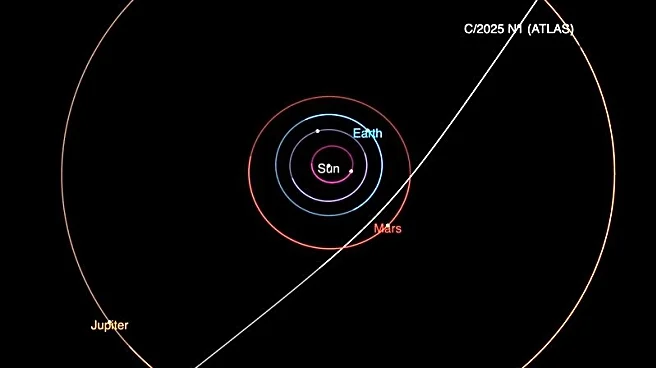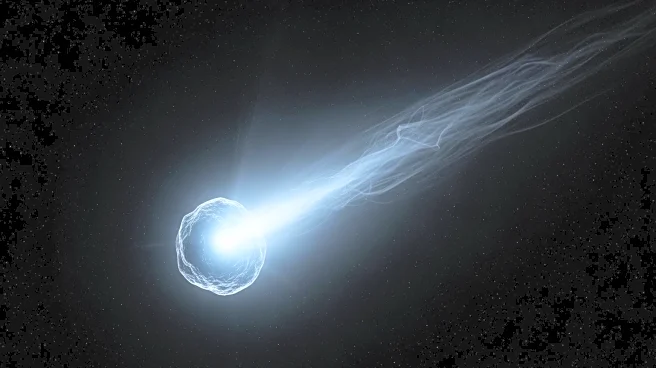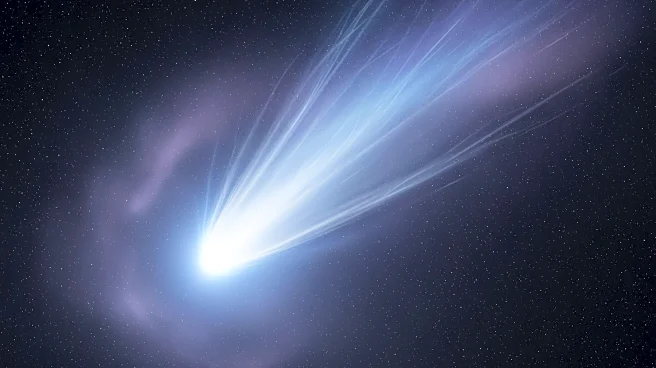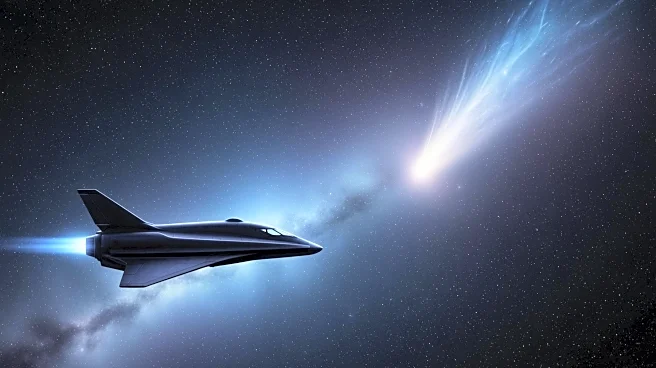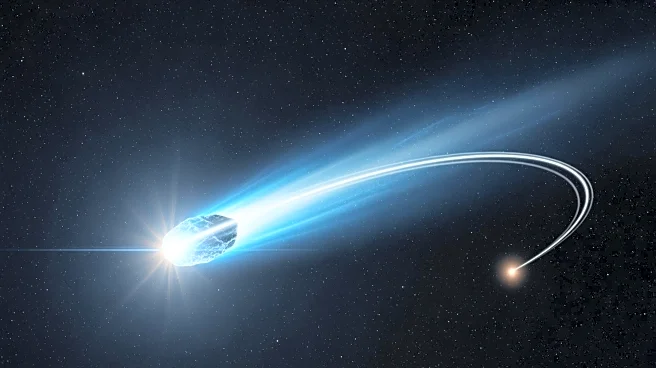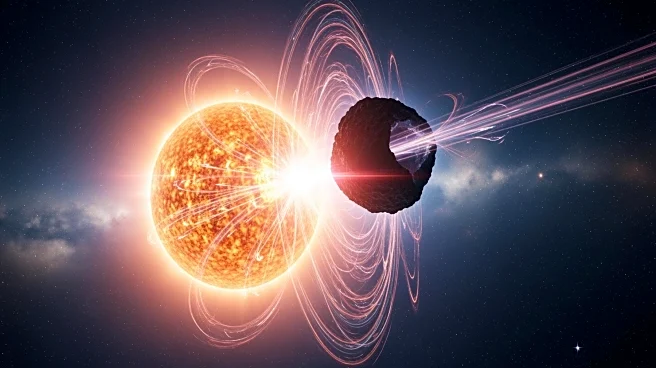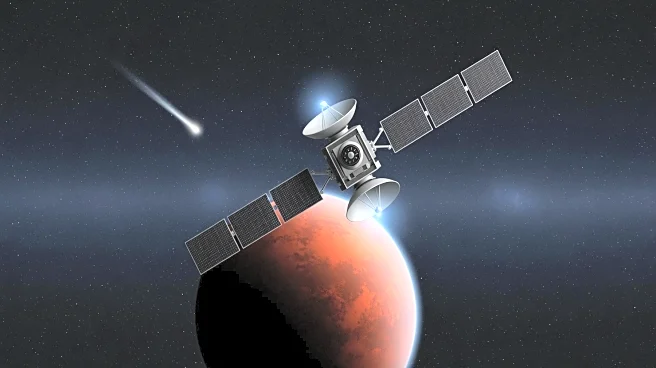What's Happening?
NASA is set to reveal new images of the interstellar comet 3I/ATLAS during a live event at the Goddard Space Flight Center. The comet, discovered on July 1, 2025, by the ATLAS survey in Chile, is only
the third confirmed interstellar object to pass through our solar system. NASA's event will showcase multi-wavelength images from various observatories, including Hubble and JWST, and discuss the comet's composition and trajectory. The comet, which passed close to Mars last month, will make its closest approach to Earth on December 19, 2025, at a safe distance of 170 million miles. ISRO in India has also released new observations, contributing to the global effort to study the comet's structure and chemistry.
Why It's Important?
The study of 3I/ATLAS provides a rare opportunity to understand the composition and behavior of interstellar objects, offering insights into the conditions of other star systems. The comet's unique trajectory and composition, including a CO2-rich coma, are of significant interest to scientists. Observations from NASA and other space agencies help refine our understanding of interstellar comets, which can inform theories about the formation and evolution of planetary systems. The event underscores the importance of international collaboration in space exploration, as data from various missions contribute to a comprehensive understanding of this ancient object.
What's Next?
Following the NASA event, the comet will continue to be observed by a global network of telescopes. ESA's Juice spacecraft will provide additional observations, expected to be available in early 2026. As 3I/ATLAS moves away from the inner solar system, scientists will continue to analyze data to refine estimates of its size, composition, and trajectory. The comet will remain a target for telescopic observation through late November and December, gradually fading as it recedes. NASA and ESA will update their findings as more data is processed, contributing to the broader understanding of interstellar objects.
Beyond the Headlines
The comet's interstellar origin and extreme speed suggest it is a remnant from a planetary system that predates our own. Its study may reveal conditions in ancient star systems, providing a unique probe into 'exo-Kuiper belts.' The comet's behavior, consistent with natural cometary processes, dispels theories of alien technology, emphasizing the scientific excitement of studying such objects. The coordinated global effort to observe 3I/ATLAS highlights the collaborative nature of modern space exploration, leveraging diverse resources to maximize scientific discovery.
